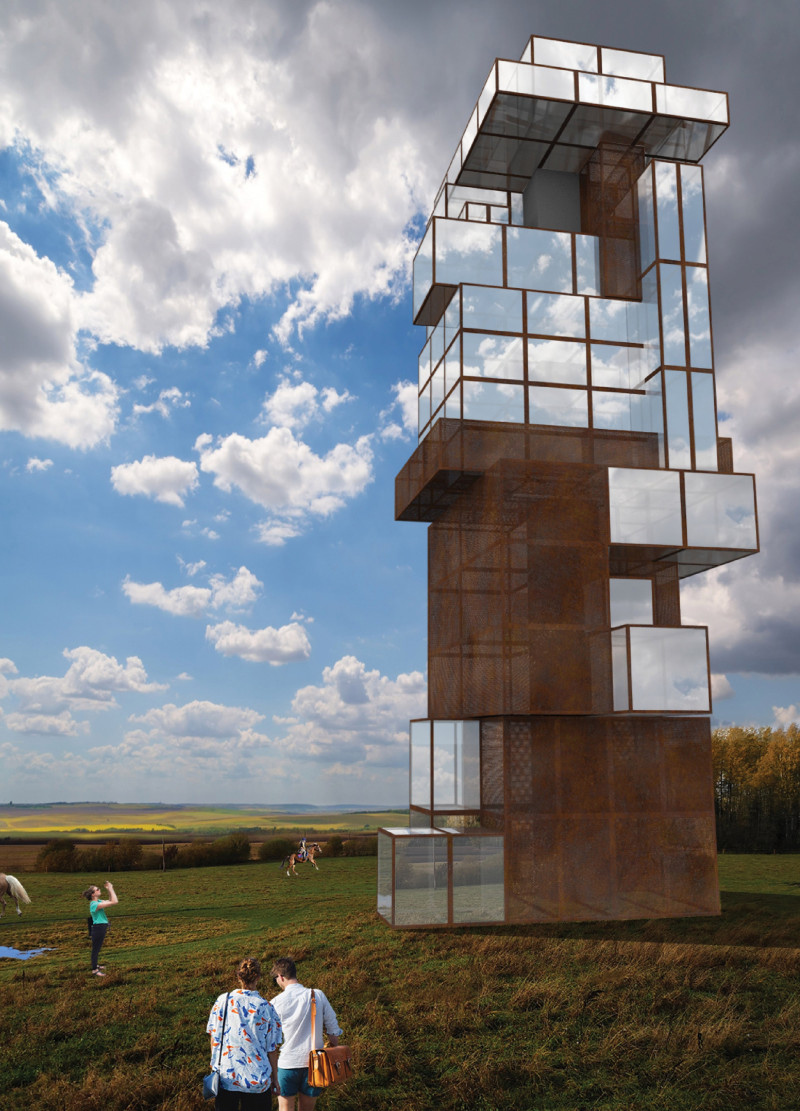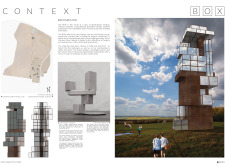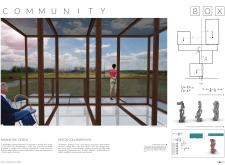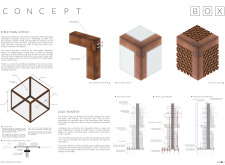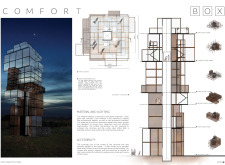5 key facts about this project
The Kurgi Observation Tower, known as "The BOX," is an architectural project designed to seamlessly integrate with its natural surroundings while providing an immersive observational experience. This structure is characterized by a modern aesthetic that emphasizes functional design and material efficiency. The tower occupies a unique position within the landscape, facilitating exploration and interaction with the environment.
The Kurgi Observation Tower serves a dual purpose: it functions as a supportive structural entity while offering visitors panoramic views of the landscape. Its design is grounded in a rational approach that harmonizes the built environment with nature. By incorporating elements such as viewing platforms and seating areas, the tower fosters engagement and encourages visitors to connect with their surroundings.
Material Selection and Structural Innovation
The architecture of The BOX employs a distinctive material palette, primarily comprising Corten steel, glass, and concrete. Corten steel is utilized for its weathered appearance and durability, reducing the need for additional maintenance. Glass elements contribute to transparency, allowing natural light to penetrate the structure and providing unobstructed views. Concrete anchors the tower, offering stability and serving as the core component that supports ascending elements.
The structural system is composed of a concrete core supplemented by self-supporting glass-steel composite boxes. This method of assembly facilitates effective load transfer while minimizing material usage. Vertical loads are efficiently distributed through the core, while cantilevered sections address wind pressure, contributing to the tower's resilience in varying weather conditions. The combination of these design approaches enhances the overall structural integrity while promoting sustainability.
User Experience and Connectivity with Nature
User experience is central to the design of The BOX. The inclusion of a central core facilitates vertical circulation, providing essential access to observation levels and housing utility services. Staircases and elevators create an interconnected flow, inviting visitors to experience the tower at different heights. The strategic placement of outdoor observation areas emphasizes the relationship between the structure and its natural context. Visitors are encouraged to enjoy both the elevated views and the inherent tranquility of the surrounding landscape.
In addition to providing a visual connection to nature, the project also considers social aspects. The design acknowledges the importance of community engagement and interaction, fostering a sense of belonging among users. The open layout and multiple viewpoints inspire exploration and promote dialogue, showcasing a thoughtful approach to architectural design.
For a comprehensive understanding of the Kurgi Observation Tower, readers are encouraged to explore the architectural plans, sections, and detailed designs of the project. These elements reveal the technical intricacies involved in its construction and offer deeper insights into the architectural ideas that influenced its development.


